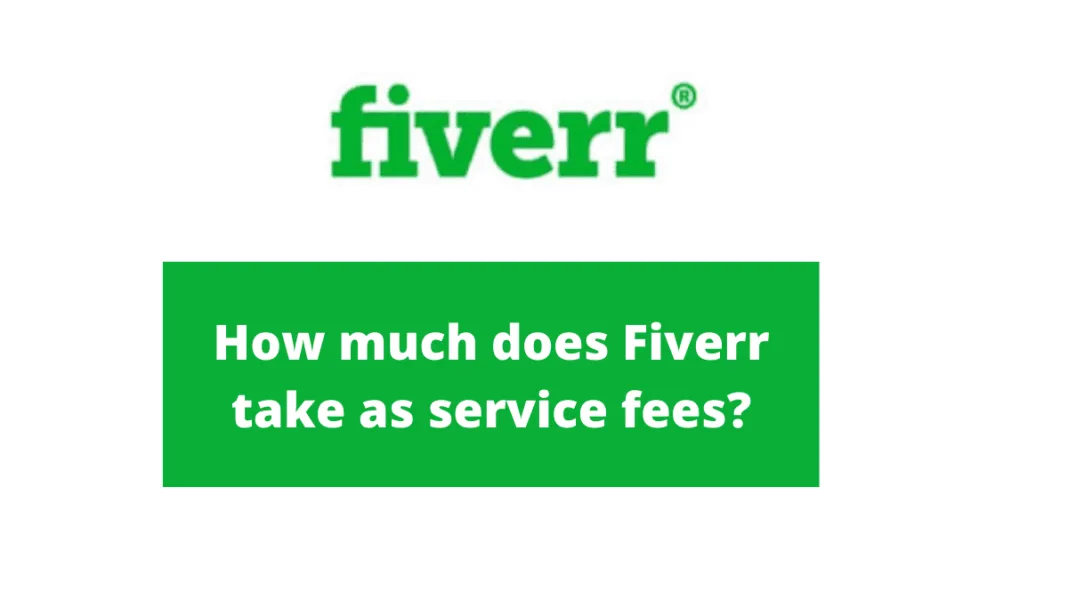If you're considering using Fiverr for freelance services or offering your own gigs, it's essential to understand the fees involved. Fiverr is a popular platform that connects buyers and sellers of services, but it doesn't come without its costs. Understanding these fees can help you budget your projects more effectively and determine the overall value you’re getting. In this guide, we dive deep into how Fiverr’s fees structure works, so you can make informed choices whether you're a buyer or a seller.
Understanding Fiverr's Pricing Structure

Fiverr has a unique pricing structure designed to facilitate transactions between freelancers and clients. The fees can be categorized into two main types: service fees for buyers and commission fees for sellers. Let’s break it down:
1. Service Fees for Buyers
When you purchase a gig on Fiverr, you're not just paying for the service itself. Fiverr adds a service fee on top of the gig price, which can vary depending on the total amount of your order. Here’s how the service fees break down:
- Orders up to $40: A flat fee of $2 is added.
- Orders between $40 and $199: A 5% fee is applied.
- Orders over $200: A flat fee of $10 is charged.
This fee structure is designed to ensure that the platform can continue to operate while providing you with a wide range of services.
2. Commission Fees for Sellers
For those considering selling services on Fiverr, it’s important to note that Fiverr takes a commission on the earnings you make. This is how that works:
- Standard Commission: Fiverr takes 20% of your total earnings for each completed order.
- No Hidden Fees: The 20% commission is clear and straightforward, meaning no surprises.
For example, if you sell a gig for $100, Fiverr will take $20, and you'll receive $80. It’s essential to factor this commission into your pricing to maintain your desired profit margin.
Understanding these fees can help you better navigate the Fiverr platform, whether you’re looking to buy services or earn money by offering your own.
Also Read This: How to Add a Gig on Fiverr: A Step-by-Step Guide
3. Breakdown of Fiverr Seller Fees

When it comes to selling services on Fiverr, understanding the fee structure is vital for maintaining a healthy profit margin. Fiverr employs a straightforward fee system that can sometimes surprise new sellers. Let’s break it down.
First and foremost, *Fiverr takes a 20% commission on every transaction. This means if you sell a gig for $100, you’ll end up with $80 after Fiverr’s cut. Here’s a quick overview:
- Service Commission: 20% of the total amount charged for the gig.
- Optional Add-ons: If you offer additional services (like faster delivery), that amount is also subject to the 20% fee.
- Tips: Any tips from buyers are fully yours, meaning Fiverr does not take a cut.
Besides the commission, there are other factors that can affect your earnings:
| Factor | Impact on Earnings |
|---|---|
| Refunds | Refunds can reduce your total earnings, as Fiverr will deduct these from your account. |
| Currency Conversion | If you are selling internationally, currency conversion fees may apply. |
In summary, while Fiverr’s seller fees can seem daunting at first, being aware of them can help you strategize your pricing and ensure profitability when selling your gigs.
Also Read This: How to Change Your Fiverr Description: A Step-by-Step Guide
4. Breakdown of Fiverr Buyer Fees

Shopping on Fiverr is super convenient, but it’s important to know about the fees that come into play for buyers. Understanding these fees will help you manage your budget effectively when you're looking for services.
When you purchase a gig, there’s a service fee that Fiverr applies. Here’s how it generally works:
- Standard Service Fee: Fiverr has a sliding scale for service fees. For orders less than $40, it’s a $2 fee. Orders between $40 and $199 incur a 5% fee, while those over $200 will have a $10 fee.
Here’s a handy breakdown of how this might look in table form:
| Order Amount | Fee Structure |
|---|---|
| Less than $40 | $2 flat fee |
| $40 - $199 | 5% of the order total |
| Over $200 | $10 flat fee |
One thing to keep in mind is that these fees are automatically added at checkout*, so the total price you see will include both the cost of the service and the applicable fees. It’s always wise to factor this into your budget when you’re browsing gigs. All in all, while there are fees involved, Fiverr provides a wealth of services that can make it worth every penny.
Also Read This: What is the Payment Method on Fiverr?
5. Additional Costs and Considerations
When diving into the world of Fiverr, it’s essential to be aware that the listed prices of services aren’t the complete picture. There are some additional costs and considerations that can impact your overall spending. Let's break it down!
1. Service Upgrades: Many Fiverr sellers offer additional upgrades or add-ons to their basic packages—like faster delivery, extra revisions, or premium features. These can enhance the service you receive but come at an additional cost. Always check the add-ons to see how they might inflate the total price.
2. Multiple Orders: If you’re working on a project that requires various services (like logo design, social media management, and video editing), keep in mind that each service will carry its own Fiverr fee. The cumulative cost can be substantial if you don't plan ahead.
3. Payment Processing Fees: Fiverr accepts various payment methods, including credit cards and PayPal. Depending on your payment method, there might be slight processing fees incurred. It’s wise to check these beforehand, especially if you’re placing a large order.
4. Currency Conversion Fees: If you’re buying services from sellers in different countries, you may encounter currency conversion fees. These will depend on your bank or card issuer and could add a little extra to your total cost.
5. Delayed Deliveries: In some cases, you might need a project done urgently. Opting for express delivery usually incurs additional fees. Think about these deadlines and delivery options when budgeting for your Fiverr needs.
Also Read This: How Can a Gamer Make Money on Fiverr?
6. Tips for Minimizing Fiverr Fees
Navigating Fiverr fees doesn’t have to be daunting! With a few strategic moves, you can minimize the costs associated with using this platform. Here are some handy tips to keep in mind:
- Choose the Right Package: Always compare basic, standard, and premium packages. Select the one that meets your needs without overspending on features you don’t require.
- Look for Discounts: Keep an eye out for sellers who offer discounts for first-time buyers or on select services. This can significantly reduce your overall expenditure.
- Bulk Orders: If you foresee multiple projects needing similar services, consider placing a bulk order. Many sellers offer pricing discounts for larger commitments.
- Communicate Directly: Before placing an order, reach out to the seller with any questions. Clear communication can sometimes lead to personalized offers or bundled services at a discounted rate.
- Be Mindful of Extras: Evaluate upgrades and extras critically. Sometimes sellers package them attractively; however, only opt for what you genuinely need to avoid unnecessary expenses.
By following these tips, you can enjoy the unique services Fiverr offers without breaking the bank. Happy freelancing!
Also Read This: Leading Fiverr Sellers in 2024
Frequently Asked Questions about Fiverr Fees
When it comes to understanding Fiverr fees, it’s normal to have a few questions. After all, navigating through platform fees can feel a bit overwhelming. Let’s clarify some of the common queries regarding Fiverr fees.
- What percentage does Fiverr take from my earnings?
Fiverr takes a 20% commission from your earnings. This means if you sell a service for $100, you’ll keep $80.
- Are there any additional fees?
Yes, aside from the 20% commission, there might be payment processing fees depending on your chosen payout method. For instance, PayPal may charge its own transaction fee.
- How often can I withdraw my earnings?
Fiverr allows you to withdraw your earnings once they are cleared, after a 14-day waiting period from the completion of an order.
- Are buyer fees included in the gig pricing?
No, buyers pay an additional service fee on top of the gig price. This fee varies but typically ranges from $2 to 5% depending on the order amount.
- Can I lower my service fee?
Unfortunately, you cannot change Fiverr's service fee structure, but you can adjust your gig pricing to account for this cost.
Understanding these common queries can help you navigate Fiverr's fee structure more efficiently, so you're not caught off guard during your transactions.
Conclusion
In summary, Fiverr fees are an essential aspect of operating on the platform. While the 20% commission on your earnings might seem steep, it covers a lot, from marketing to customer support. Understanding these fees can empower you as a seller and help you factor them into your pricing strategies.
When considering Fiverr as a platform to provide your services, it's crucial to weigh these fees against the potential earnings you can make. Here’s a quick recap:
| Fee Type | Details |
|---|---|
| Seller Commission | 20% of earnings |
| Buyer Service Fee | Varies ($2 to 5% of order amount) |
| Payout Frequency | After a 14-day clearance period |
Ultimately, knowing and understanding the fees can help you set realistic expectations and plan properly as you embark on your Fiverr journey. Happy gigging!



